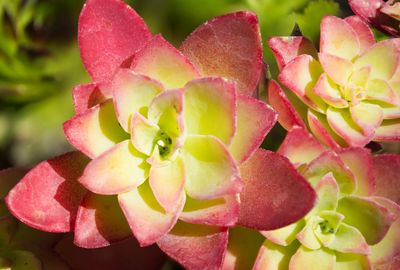Common Succulent and Cactus Pest Problems
While other bugs might occasionally snack on these cactus plants and succulents, they’re usually not found in high enough numbers to cause any real damage – like that of cactus beetles. However, the three most common offenders you may come across include the following:
Fungus gnats
Fungus gnats, similar to those pesky little fliers (fruit flies) that surround bananas and other fruit when it is a tad too ripe, may linger on or near your plants. Too much water in the soil attracts them. Avoid overwatering succulents to help keep fungus gnats away. If you’ve soaked your plants and then notice succulent and cactus pest problems like this, let them dry out. For houseplants, put them outside to speed up drying when temperatures permit. If soil is soggy, unpot and remove soil from roots to avoid rot. Rot develops quickly on wet roots and stems. Then repot in dry soil.
Aphids
A swarm of small bugs around new foliage are usually the dreaded aphid. You may notice cottony threads among the young leaves. These bugs are about 1/8 inch (3 mm.) and may be black, red, green, yellow, or brown; their color depends on their diet. Aphids suck the sap from new growth, leaving foliage crinkled or stunted. These pests spread rapidly to other plants. Treatment varies if plants are indoors or outside. A blast of water usually dislodges them and they do not return. Houseplants often can’t be blasted with a spray of water. If foliage is too delicate, use an alcohol or horticultural spray. One application will usually take care of aphids, but keep check to make sure they’re gone and check nearby plants. Root aphids are a different variety of these pests that feed on the roots of your succulents. If your plants are yellowing, stunted, or just not looking well, check for root aphids. Loss of vigor and no other visible pest or disease symptoms is a good reason to unpot and look. These sneaky ones try to hide beneath the rootball, although they are sometimes found on top of the soil. Make sure you unpot outside, or at least away from other plants. A systemic insecticide or products containing Spinosad, new soil, and careful monitoring can help keep root aphids away. Dispose of infected soil far away from anything you are growing.
Mealybugs
A white, cottony mass on your plants often indicates the presence of mealybugs. Eggs overwinter on woody stems and crawlers hatch in spring. These suck juices from soft spots on your plants, causing distorted growth and weakening the plant. As crawlers suck on the leaves, they develop a waxy coating that protects them. Feeding crawlers mostly stay in the same spot unless moved to another plant by ants. Ants covet the juice (honeydew) produced by feeding mealybugs and aphids, protecting the pests in their symbiotic relationship. Alcohol or horticulture soap spray dissolves the protective exoskeleton, eliminating the pests. Again, more than one treatment may be needed. Alcohol is available in handy spray bottles. Both 50% and 70% types work for treating pests. Don’t let these pests of succulents or cacti keep you from enjoying your plants. Learning what to look for and how to treat them is all you need to keep these plants looking their best.
